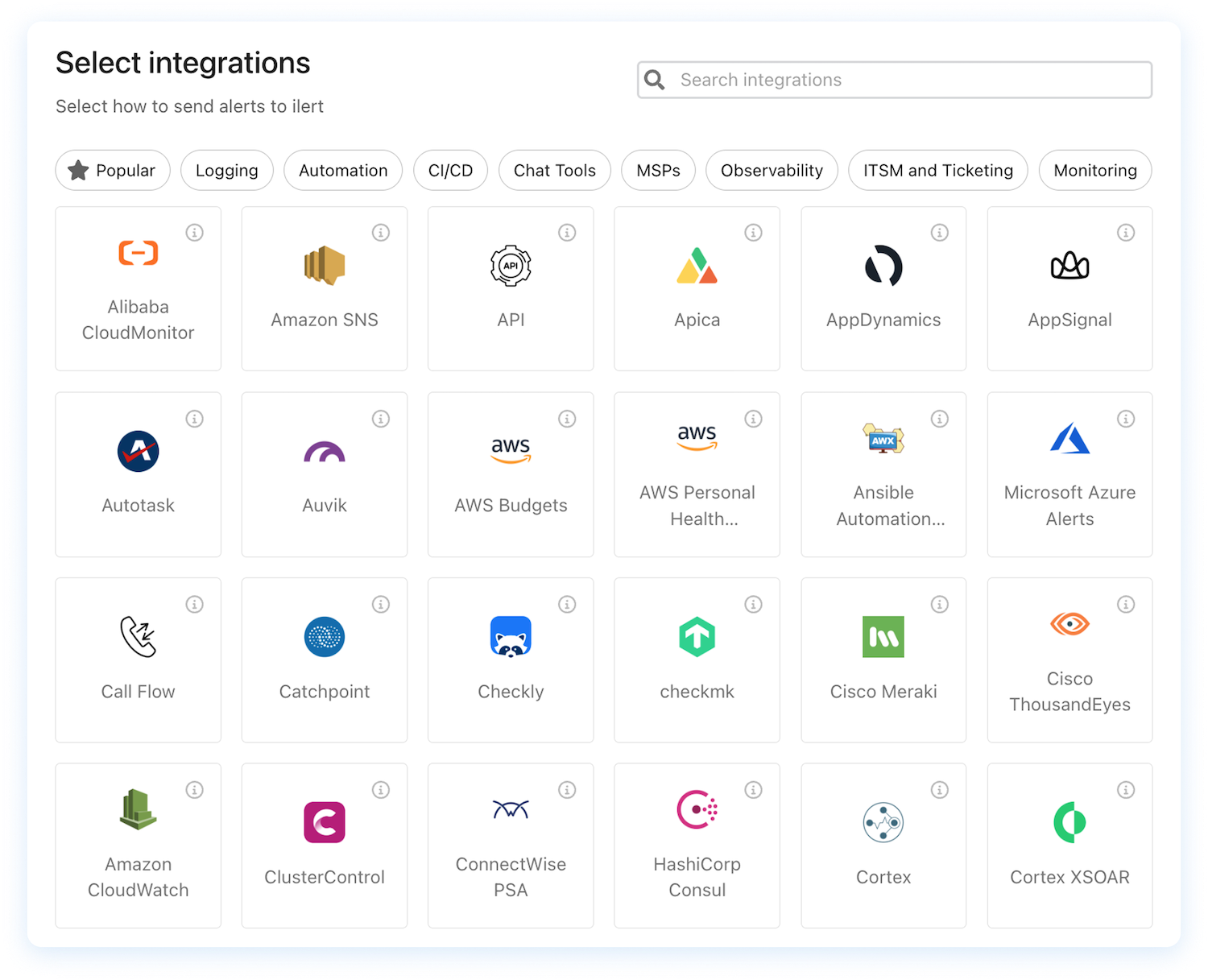
Platforms compared: Which one fits your org best?
Two modern incident platforms with different DNA. Rootly is a collaboration-first platform that offers modular pricing, with on-call services available as standalone options. ilert is an AI-first end-to-end incident management platform that combines all critical parts of the incident management process across all plans, including Free.

ilert is trusted by companies like










































































ilert vs Rootly in a nutshell
Rootly targets simplified incident management. Offering an attractive interface, it delivers critical features for incident response, aiming to help reduce communication silos during IT incidents. At the same time, Rootly offers a relatively limited approach to incident management that may not always work for large teams or IT service providers operating in multi-tenant environments.
ilert is built on the critical pillars of incident management: alerting, on-call planning, escalation policies, incident communication tools, and post-mortems. We at ilert believe that incidents cannot be handled properly without these elements. That's why they are included in all ilert plans, including the free one.
So, what’s the difference between ilert and Rootly?
Evaluate ilert against Rootly at a glance – features contrasted side by side.
Key differences (at a glance)
- Pricing. Rootly offers a 14-day trial and no Free plan, ilert provides both.
- Call routing. Rootly follows a very simple, rule-based approach where users have to set up call routing in a form. ilert offers an intuitive drag-and-drop interface, as well as many additional features. Also, ilert’s country coverage for phone numbers is far broader.
- Integrations. The catalogs of Rootly and ilert differ significantly. Rootly, while offering a few monitoring integrations, concentrates more on productivity and documentation tools. ilert puts observability, monitoring, ITSM, and PSA at the forefront.
- Status pages. Rootly provides simple built-in pages. ilert provides status pages as an add-on with numerous features.
Different integrations for different needs
Both platforms cover the usual monitoring, ticketing, and comms stack, but they emphasize different strengths. ilert publishes 100+ inbound, outbound, and CI/CD integrations aiming to fit different use cases, including the needs of product teams, IT administrators, DevOps, and MSPs. It provides built-in connection with various monitoring, observability, and logging solutions, ITSM, and PSA platforms. Rootly, meanwhile, markets around 60 integrations with a collaboration-first focus, including connectors across Jira/Confluence.


Hotline for manual alert intake
Do you rely not only on monitoring alerts but also on manual reports, too? ilert gives a true hotline with a visual call-flow builder: IVR menus, PIN verification, support hours, voicemail with auto-transcription, routing to users or schedules, number blocking, and an AI Voice Agent.
By contrast, Rootly’s Live Call Routing is very high level: route live or to voicemail, add a simple calling tree menu, set alert urgency, and target services or escalation policies. While ilert provides an intuitive drag-and-drop interface, Rootly bets on a rule-based approach.
Avoiding burnout with alert grouping
Both platforms reduce noise by grouping related alerts, but their approaches differ. ilert layers AI-based content-similarity grouping on top of time-window methods; teams can tune similarity thresholds per source and preview the impact on recent alerts to balance sensitivity and recall.
Rootly provides grouping and urgency within its on-call module alongside configurable routing rules, giving a straightforward way to collapse duplicates and prioritize response. If you need fine-grained, ML-assisted tuning for particularly noisy monitors, ilert’s similarity grouping is a standout.


Simple vs. advanced status pages
While Rootly provides public and private status pages, ilert additionally offers an audience-specific option. A key difference is access control: Rootly’s private status pages are only available to Rootly users and require login, making them suited to internal audiences; custom domains are limited to public pages. ilert’s private pages can be opened to external stakeholders who don’t have ilert accounts via IP allowlists and passwordless email login (by email address or domain). Moreover, audience-specific pages are tailored to different stakeholder groups with custom branding and messaging. For organizations that need segmented internal IT comms or customer-by-customer visibility, ilert’s audience-specific model reduces administrative and financial overhead.
ilert vs. Rootly at a glance


Security posture
ilert emphasizes compliance-first operations – GDPR-compliant, ISO 27001-certified, and made and hosted in Germany – with built-in controls like MFA/SSO, full-stack encryption, and regular external pentests.
Rootly also maintains a public Trust Center and is SOC 2 Type II certified; its site also highlights enterprise features and privacy frameworks alongside SSO/SCIM and audit logs. If EU data residency and minimizing cross-border transfer risk are priorities, ilert’s Germany-hosted footprint is a differentiator.














